Word of God to Words in Print: English Bible Pt. 1
Aaron Lewendon - Eden Bibles & Bible Study Specialist
2000 years after the Word became flesh, there may be as many as 900 different English Bible translations each with a count of around 788,000 words.
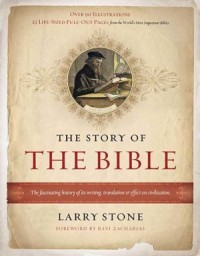
So how did we get from there to here?
From Greek Text to Great Bible
The earliest voicing of the Bible in the native tongue of these islands is attributed to an illiterate herdsman, Cædmon, around 670AD.
Learing Bible stories from the monks of Whitby, he ‘paraphrased’ them as poetic songs to become, perhaps, the first touring British worship artist.
Further north, and less than a century later, the sainted ‘venerable’ Bede is thought to have translated St John’s Gospel into Anglo-Saxon by the time of his death in 735. Although his commentaries and other work survive, what would certainly be the oldest English Bible is lost without trace.
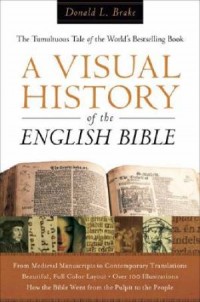
In fact, the oldest English written in the Bible only exists because the local monks weren’t terribly good at translating from the Latin as they preached the Word to their local converts.
No Latin for the Locals
To help themsleves out, the monks scribbled Old English translations of important passages and stories ‘interlinear’ (between the lines) of Latin in some of their richly illustrated manuscripts, such as The Lindisfarne Gospels (950AD) from Northumbria.
In these scriptures, for the first time, the Word of God in English appears with a sound and meaning we can almost recognise: as in ‘The Lord’s Prayer:
Fader usær ðu arðin heofnu, sie gehalgad noma ðin..." (Northumbrian 'Gloss')
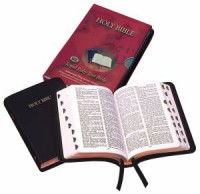
Enter the Normans: Exit the English Bible
1066 heralded William Conqueror’s conquest, bringing with him his Norman-French clergy and a solidly Latin tradition. And that was the end of the English language Bible for the next 300 years or so.
Then in 1382, Yorkshireman John Wycliffe laboriously copied by hand, the first complete translation of the Bible from the Latin Vulgate into the ‘Middle English’ of Chaucer.
Though he managed to die only of natural causes, he would be later declared a heretic and his books and bones burned.
From Written Word to The Word in Print
Printing and the renaissance began the Bible translators’ commitment to accuracy.
In 1454 Gutenberg produced the first modern print Bible, and in 1516, Desiderius Erasmus revolutionised the source material with his Textus Receptus: a Bible compiled from older, Greek manuscripts rather that just the later Latin versions.
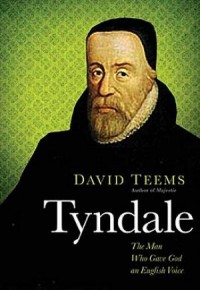
Great Age of the Scholar Translator
Now come the great names of English Bible translators with the pioneer, William Tyndale; whose 1526 printed English New Testament, Pentateuch and Jonah were branded heretical for not being in Latin, forcing him to become a fugitive until he is betrayed and executed.
Ten years or so later, Myles Coverdale built on Tyndale’s work to print the first complete English Bible, revised by John Roger (alias Thomas Matthew - Bible translation is still dangerous work) into the Matthew Bible – the first to be translated into a further 5 languages.
O oure father which art in heauen, halowed be thy name..." (Myles Coverdale Bible)
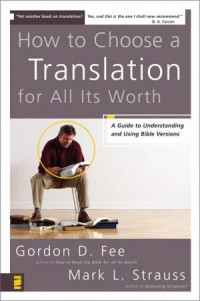
Finally, Bible translation received recognition and royal approval – if for reasons of politics rather than piety. Breaking with Rome in 1534, Henry VIII authorised Coverdale’s revision of Tyndale’s English text as the ‘Great Bible’, for use in all the country's newly Protestant churches.
For the next 400 years all English language Bibles – and many others would trace their direct lineage back to the work the Greek text of Desiderius Erasmus, and the English translations of William Tyndale and Myles Coverdale.
The Continuing Work of Bible Translation
Bibles in this great tradition inlcude the King James Version (KJV), New King James Version (NKJV), New Revised Standard Version (NRSV) and English Standard Version (ESV) - all presented in a wide range of classic and contemporary covers and bindings, and rich with additional practical features and study notes.
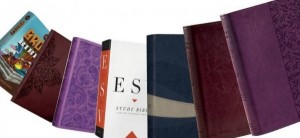
Continuing the translators' tradition of creating readable, relevant English language Bibles, The New International Version (NIV), New Living Translation (NLT) and The Message give you the Word in the words of today's English speakers.
Look out for 'From Great Bible to Great Revivals' - part 2 of "English Bibles: 'Word of God to Words in Print".
Latest Blogs

Gifts
Finding Your Symbol of Faith: A Guide to Christian Cross Necklaces
Looking for the perfect symbol of faith? Explore our guide to Christian cross necklaces, from rustic wooden designs and sturdy men's chains to elegant silver pendants.

Gifts
The Best Christian Gifts for Under £20
Looking for a meaningful gift that won't break the bank? Explore our guide to the best Christian gifts under £20, from inspiring journals to beautiful home decor.

Gift Guide
15 Confirmation Gift Ideas for Boys and Girls
Celebrating a confirmation? Discover 15 meaningful gift ideas for boys and girls, from youth Bibles and jewellery to inspiring journals and keepsakes.

Bible
30+ Powerful Quotes About the Bible (For Inspiration in 2026)
Looking for inspiration? Discover a curated collection of the most powerful quotes about the Bible, from famous historical figures to modern theologians and Scripture itself.

Bibles
What is the "Standard" Bible for Christians?
Is there an "official" Bible that all Christians use? We explain the difference between the NIV, KJV, and ESV, and help you find the standard text for your church or personal reading.

Bible
"I Keep Failing to Read the Bible" – 5 Tips to Make the Habit Stick
Do you start a Bible reading plan only to quit a few weeks later? Stop the cycle of guilt. Here are 5 psychological tips and practical changes to help you build a Bible habit that actually lasts in 2026.
